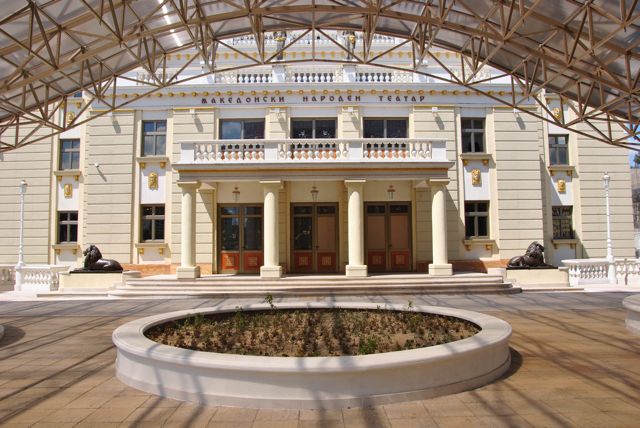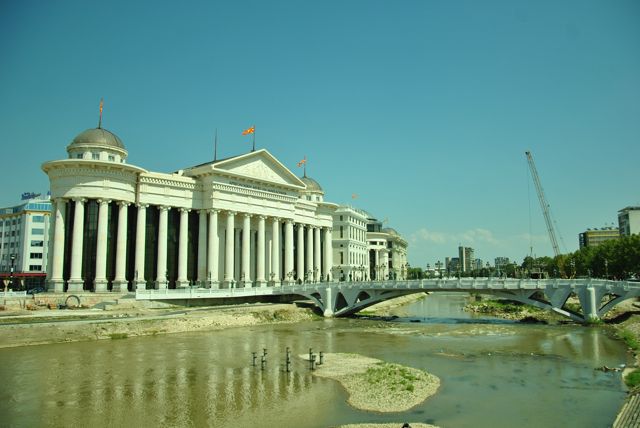Photos: Polina Spartyanova
But Yianna does not think so. She believes the project is a waste of taxpayers' scarce money and thanks to which many companies close to the government have benefited by overcharging the accounts that the state still pays. The young Macedonian girl showed me one of the other bronze statues in the square, which is about 7-8 metres high and placed on a concrete pedestal, and told me that, according to the government report, it is worth one million euro. A little further we came to the newly built theatre in the centre, which is also surrounded by statues of famous Macedonian actors (in human size). There I made a startling discovery, namely that the decorative pots and railings around the theatre are artificial - if you simply tap on them and have a trained ear, you hear that the material is not 100-percent concrete. Later I realized that they are simply made of styrofoam, and fixed and plastered with paste cement in order for them to look like an authentic construction and not like something made during a manual labour class.

208 million euro, according to the official data, were invested in the bronze and styrofoam that adorn the new centre of Skopje. Questions as to why it is necessary to invest in such projects that decorate the city centre instead of investing in the miserable student dormitories or the declining hospitals naturally arise. Especially taking into account the fact that 30% of Macedonians are officially poor and the money that they spend a month to subsist is equal to the daily electricity and water consumption of the fountain of the unknown rider. After 23 years of independence and attempts to independent prosperity, Macedonia is back again to the starting point because it still lacks adequate self-awareness and good neighbourly foreign relations, its Euro-Atlantic integration seems like a dream, and its total debt amounts to 50% of GDP.
However, all this is well disguised by the shiny baroque domes and neoclassical buildings in "Skopje 2014". At first glance, the project demonstrates the prosperity of one of the former Yugoslav republics, but reality comes to the fore for those who are more discerning at the sight of the people who have to live everyday alongside bronze and styrofoam.

While Yianna was walking next to me with her head down, in the centre of Skopje, we walked past a middle-aged man who also had foreign guests and was proudly showing them the building, which was designed for an archaeological museum. "They will put here all the Macedonian treasures and artefacts that testify to the greatness of our ancient civilization," he told his guests visibly pleased. He was probably one of the supporters of Nikola Gruevski’s authoritarian policies and his government’s project "Skopje 2014" and there is hardly a living force to show him the expensive and kitschy reality. Apparently, one has two options when living in Macedonia, namely to be proud or to be hungry.